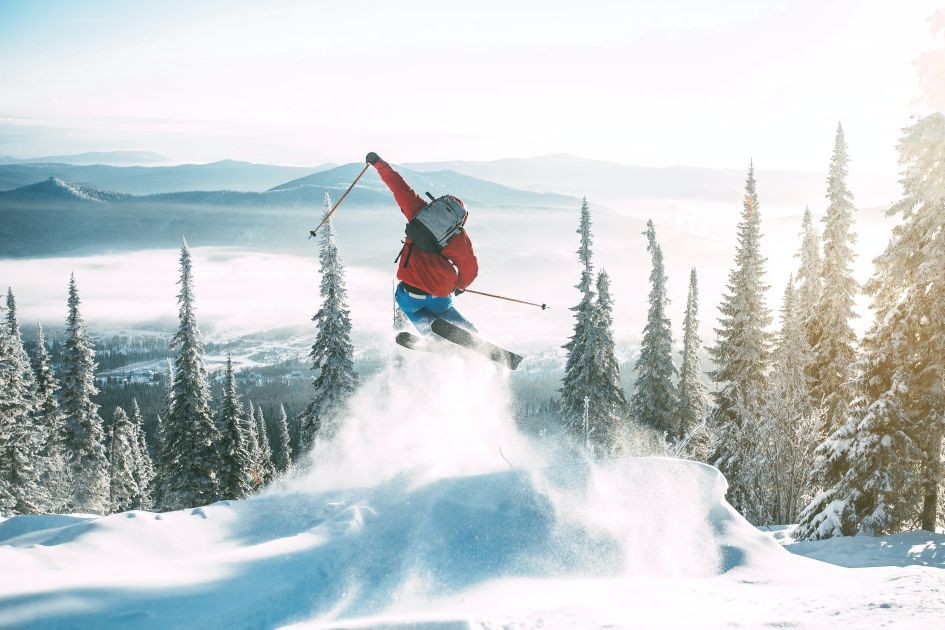
We’ve all been there, stood at the top of a run, looking down the mountain, thinking “How on earth am I meant to get down this slope?”. It could be down to the steepness, the snow conditions, the weather, the mood you woke up in; any number of reasons could form a psychological block and give you that ski anxiety that’s preventing you from enjoying your luxury ski holiday to its full extent. Every skier has been a beginner, and overcoming your ski nerves is just as important to getting the most out of your skiing as developing technique. After all, skiing is meant to be fun, and the more confidence you build, the more you’ll end up enjoying yourself when skiing about the mountain. The aim of this blog will be to focus on some advice for nervous skiers, both practical tips for skiing and improving one’s mindset, that will have you skiing with confidence in no time at all.
Who am I?
You might be sat there reading this and thinking to yourself: “Well, who are you? What makes you qualified to give advice for nervous skiers?”. It is true, I am no sports psychologist, psychology is not a subject I even took at school. I am, however, an experienced expert skier and ski instructor. I first put on a pair of skis 25 years ago, at the age of 2, in the small, charming Austrian resort of Filzmoos. In addition to family ski holidays and university ski trips, I have spent three of the last 5 winters on ski seasons in the resorts of Cortina, Pila and Val d’Isère.
During this time I have trained as a ski instructor, taking many different exams, as well as spent time teaching both children and adults who’ve never been on skis before. In the last few years I have had to frequently push myself out of my comfort zone, such as learning how to ski bumps and further develop my off-piste skiing, and also deal with the psychological pressures that come with being assessed on week-long exams. I have had to help beginners in overcoming their own ski nerves, motivate nervous children to tackle slopes they’re afraid of and develop a safe and enjoyable learning environment. Along the way, I’ve picked up some tips for nervous skiers that can help rid the fear of skiing and put you on the path to skiing with confidence.
Get Lessons
The number one piece of advice I would give any skier, no matter the ability, is to get some lessons. It doesn’t have to be for your whole holiday, even just a couple of hours in the morning at the start of the week is sure to give you some benefits that will last the rest of the holiday and beyond. Many of us are guilty of falling into bad habits, and taking some lessons will help identify these bad habits and work towards fixing them.
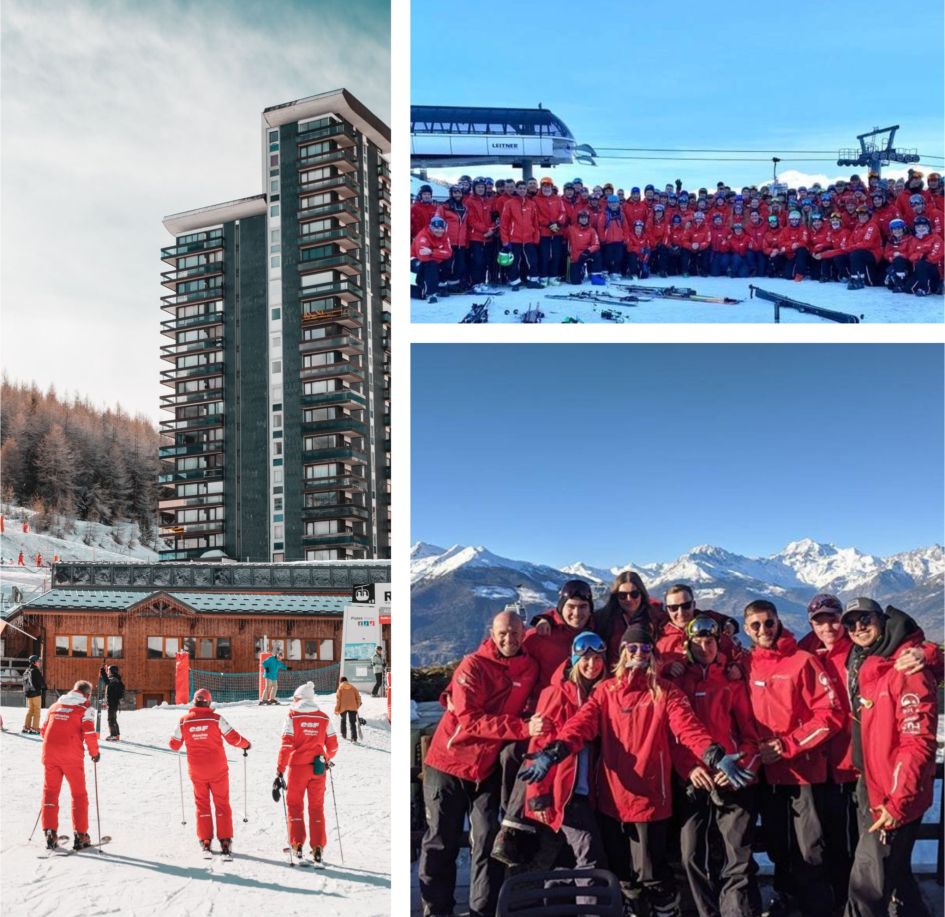
Learning proper technique will not only help you ski better, it can also develop your tactical understanding, making you more aware of how to deal with different challenging situations and improve your confidence in dealing with them. Obviously, knowing what to do and successfully executing it are two different things entirely. But being able to mentally visualise how to get down a slope will give you a lot more confidence when standing at the top of any run. Start your lessons before you even hit the slopes by checking out our intermediate skiing tips!
One further benefit from ski lessons comes in the form of positive encouragement. We can all be our own worst critic. It is very easy to fall into a negative spiral as we critique our own performance, and this will affect our confidence when it comes to skiing the next run. I can attest that positive affirmation is a sure-fire way to build confidence, among novice skiers and experts alike. Having an instructor can help us see the bigger picture. It can help us focus on the achievements and progress we are making, even if they are as simple as making it down a tricky section of piste without falling over for the first time.
Be Prepared
“Be Prepared” is the Scout Motto, and it applies to skiing just as it does to scouting. A ski holiday is unlike most other types of holiday you will go on. It involves a large amount of vigorous exercise. While we might just be able to get away with showing up to a week of skiing without any preparation, maintaining an active lifestyle can make a big difference. Even if it’s just over the course of a few weeks, in the run-up to a ski holiday. There are so many exercises out there that will help, specifically targeted at preparing for skiing.
What difference does this make for dealing with anxiety when skiing? It’s quite simple really, as fatigue sets in we tend to not ski as well and the chances of accidents increase. This tiredness can affect how you’re thinking and feeling at the top of a piste. Being physically capable of tackling any run, even at the end of a long ski day, is going to leave us in a more positive mindset and have us skiing with confidence.
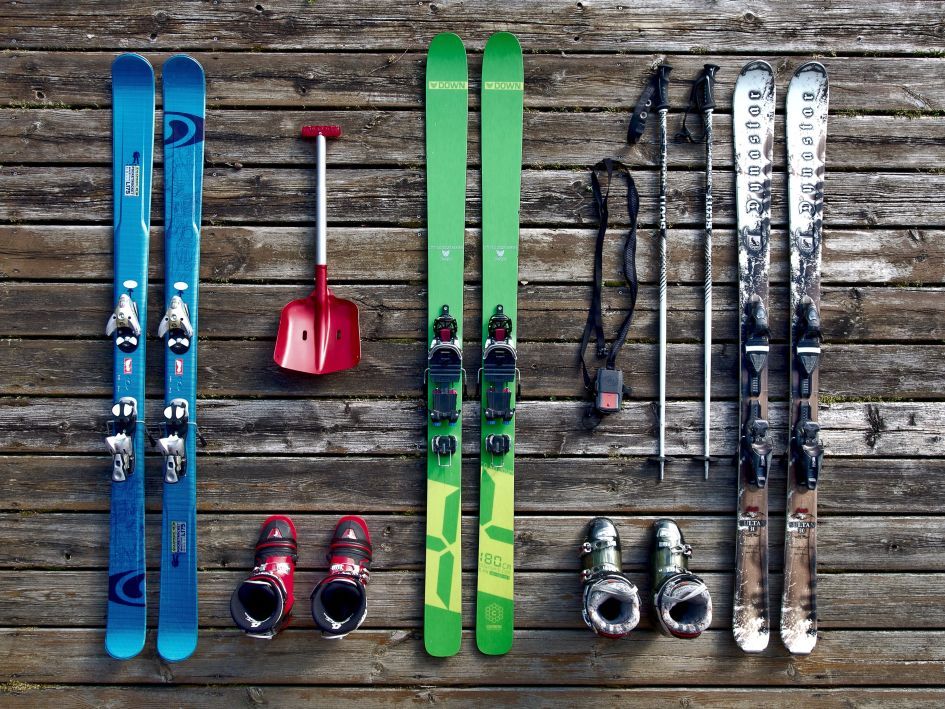
Being prepared isn’t just limited to our physical fitness. Having the right equipment is paramount. We all want to get straight out onto the slopes as soon as we arrive, but sometimes it pays to spend that little bit longer in the ski shop before we do so. Making sure you have correct fitting boots and helmets or paying that little bit extra for a newer, less worn set of skis can pay dividends. If you don’t have faith in your equipment, you’re not going to have faith in your skiing. It will just form another barrier to overcoming your ski nerves.
Don’t get hung up on colours
Now, I’m not saying to ignore the colours of pistes entirely. You shouldn’t be throwing yourself down a black run if it’s your first day on skis. But a lot of skiers fall into the trap of getting too focused on the colour of a run and allowing it to give them anxiety when skiing. The nature of the mountain environment is that it is inconsistent. Red runs don’t all have the same uniform gradient between them, not even all the way down the same run. I’d argue skiing would get pretty boring if that were the case. Slopes undulate, you’ll find different levels of steepness at different points on a run. In fact, it is likely you’ll have skied a steep pitch of blue run in one resort that is steeper than a red run in another resort.

The point is, I’ve seen many skiers who are perfectly capable of skiing certain slopes completely freeze up because they see it’s a blue/red/black run. Similarly, I’ve got to the bottom of runs before with students who’ve managed them excellently and only then pointed out the colour. Often I’ll hear how they wouldn’t have skied it had they known beforehand it was a red run, but now they’ve done it once they feel confident in doing it again. The colour system acts as a useful guideline for getting around the mountain. However, they are not the “be all and end all” and overcoming the mental hang-up of the colour of a piste will go a long way towards overcoming your ski nerves.
Seriously, don’t get hung up on colours
On the opposite end of the spectrum to the previous section, you get people who will avoid greens and blues because they’re seen as too easy. Their number one goal of the ski holiday is to ski every black run in the resort as many times as possible, in which case you should send them off to ski resorts for advanced skiing and see what they’re really made of! You’ll often find them at aprés bragging to whoever will listen about the number of times they made it down the hardest run on the mountain that day. The problem with sticking to only the hardest runs is that you will be constantly struggling all day. If you’re only managing to just “make it down” a run, and are not actually taking the time to enjoy your skiing, it can have a negative impact on your skiing confidence.
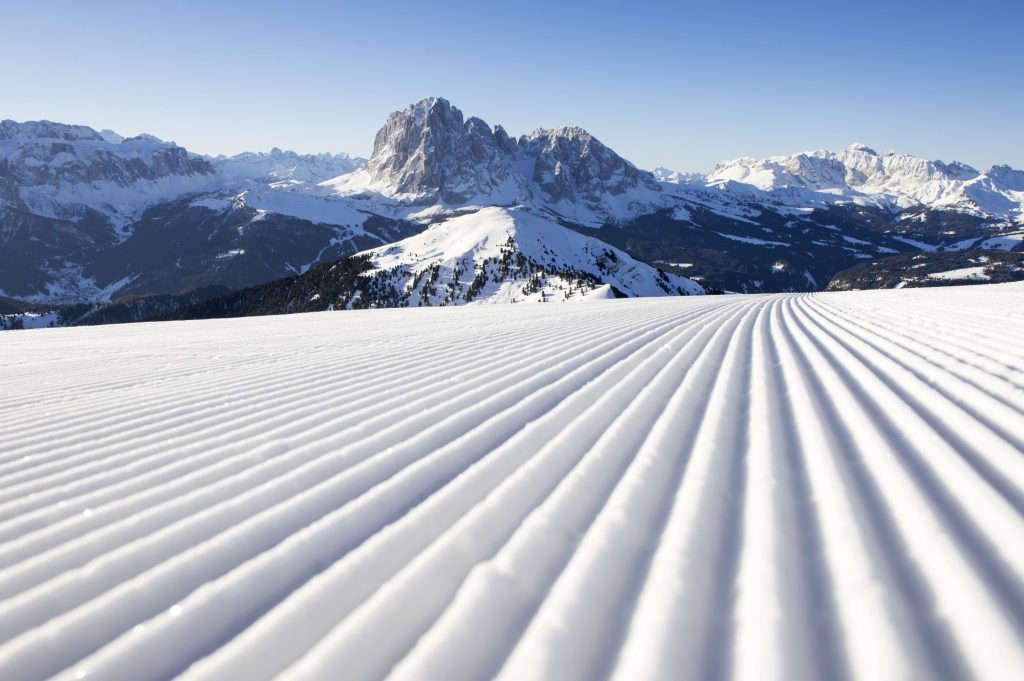
This can be true for all skiers. If you’ve been just “making it down” runs for most of the day, it can start to cause an increase in ski anxiety and a drop in confidence. A fear of skiing that wasn’t there at the start of the day may begin to set in. There’s often multiple routes down to a chairlift, and it’s okay to head for the easier option. Sometimes ripping it down a blue is just the boost you need for building ski confidence. Overcoming your ski nerves can be as simple as taking a few laps on an easy run you know you can ski well, before heading on to tougher terrain that pushes you out of your comfort zone.
Pushing out your Comfort Zone
No one ever moved forward by standing still. It might be a cliché saying, but it rings true for skiing as much as most things in life. Trying new and tricky runs or skiing in unfavourable conditions such as deeper snow or bad weather, these are all things that might push you out of your comfort zone. There will be some nerves associated with this, which might seem counterproductive to the overall goal of ridding us of our ski nerves. However, when you return to easier, familiar slopes or skiing on fresh corduroy on a bluebird day, you will be shocked at how much more confident you will be now that the conditions are easier.
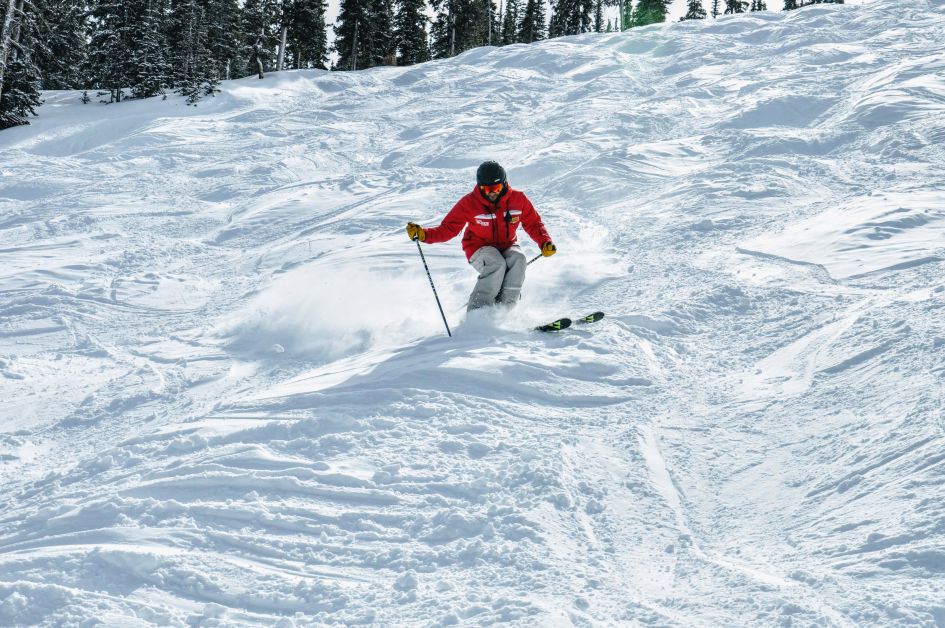
When I was learning how to ski bumps (AKA moguls), we could spend hours going over the different techniques we’d need to use or the best line to ski down them. The simple fact, though, was that the best way to get better was to ski as many runs of the toughest bumps we could find. It meant when we returned to less steep runs or smaller bumps, they seemed easy in comparison. As long as you’re not going overboard and trying something too far outside what you’re usually confident in skiing, your ability and confidence will improve in no time.
Dealing with Peer Pressure
To me personally, outside of receiving lessons from other ski instructors, I always found the number one way to get better at skiing was to ski with people who are better than you. Whether it’s following their line, watching how they ski or just picking up some useful ski tips, skiing with people better than you will make you improve as a skier, often without you even realising it’s happening. It’s a great argument to convince your non-skier friends to come skiing with you.
However, when it comes to improving your skiing ability and building ski confidence, there is a fine line between skiing with better skiers and falling to peer pressure. Just the very nature of skiing in mixed ability groups means you will encounter instances where some members of the group will find themselves in a situation they are too uncomfortable with. Hopefully you will be in a situation with kind and understanding people, where you will be able to take an alternative route down and meet up elsewhere. There can be situations, though, where some people might make you feel bad for this, or goad you into going down a run that’s too far outside your comfort zone.
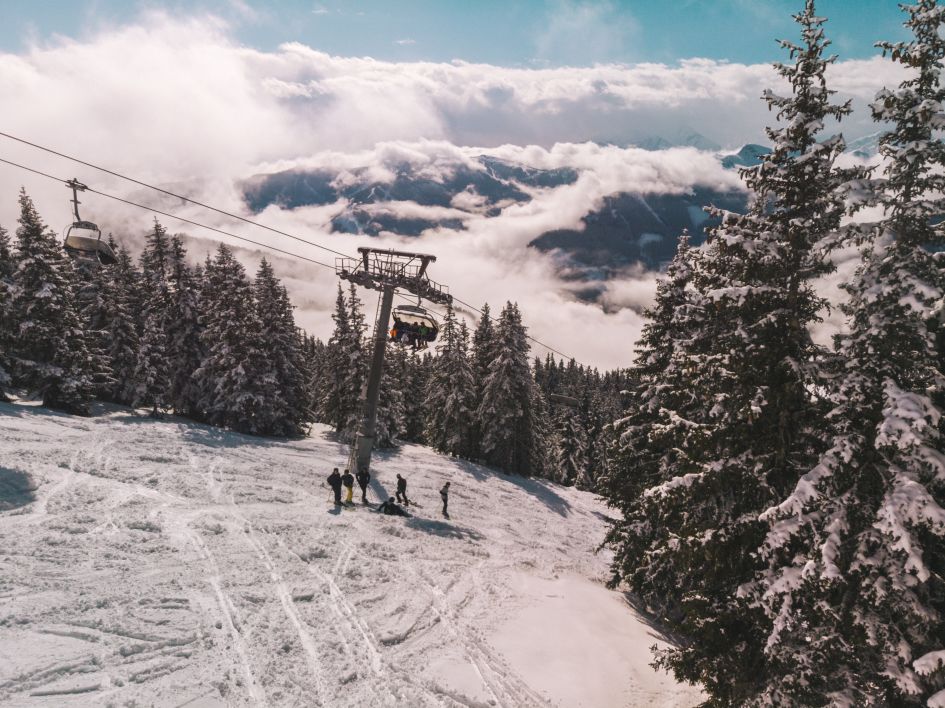
It’s in these cases where the worst thing to do is to bow to the peer pressure. It can be easier said than done, particularly among younger people, but you should always remember there is no shame in taking an easier path down the mountain. A big part in overcoming your ski nerves is knowing when to push yourself. But pushing yourself too far because of what others are doing or saying can lead you into bad situations that destroy your confidence, the exact opposite of what you want to achieve.
Overcoming knockbacks
While it is important not to willingly put yourself in situations that will ruin your confidence, sometimes these will happen regardless. We have all had a circumstance, whether a big fall at high speed, a collision with another skier, or a bad experience getting off a chairlift, that takes the wind out of our sails.
The best thing to do in these scenarios, you might ask? Return to the scene of the crime. Injuries notwithstanding, where physical recovery should be the key focus, the number one thing to do when you’ve had your confidence knocked is to ski the same run again. Fallen off a T-bar? Get right back on it. Had your skis fly off as you fall in the mogul field? Get the nearest chairlift and ski them again. By all means, take a moment’s breather to compose yourself. Head to a mountain restaurant for a warm drink or bite to eat. Just don’t go leaving it too long to go back to where the setback happened.
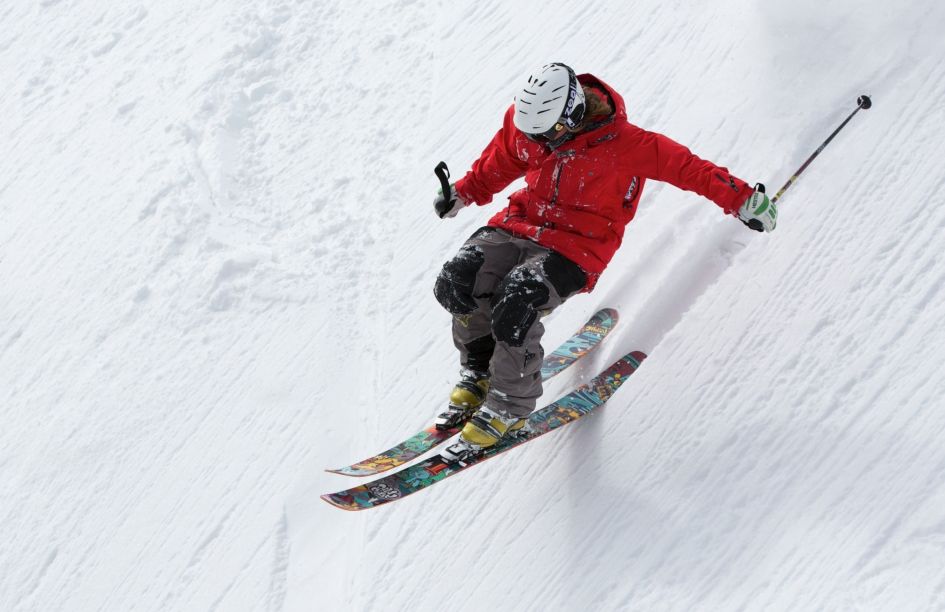
If you avoid returning there, then over time the longer you wait, the more the nerves of skiing that place will be. I have found that if you have a big fall and leave it too long to ski the same spot again, it almost develops a sort of mythical status in your mind. Whether you can ski steeper or harder sections of runs doesn’t matter, as you always associate this place as the site of “the incident”. First you’ll avoid this section of piste, and then sections that remind you of it, and before you know it you’re avoiding large swathes of the mountain because you associate it with that one time you fell down. Even if you have to ski a lot more cautiously, and technique goes out the window where the only focus is making it down safely. It is much easier overcoming your ski nerves when the wound is fresh, than when you’ve let them grow and grow into a big ball of anxiety.
Concluding Remarks
There is no one size fits all approach to overcoming your ski nerves. There can be many different reasons for nerves in the first place. And many different ways of conquering that fear that grips you sometimes at the top of the piste. What will work for some people might not always be the right approach to others. A big part of ski instructing, and all teaching really, is being able to adapt your approach to different people and different situations.
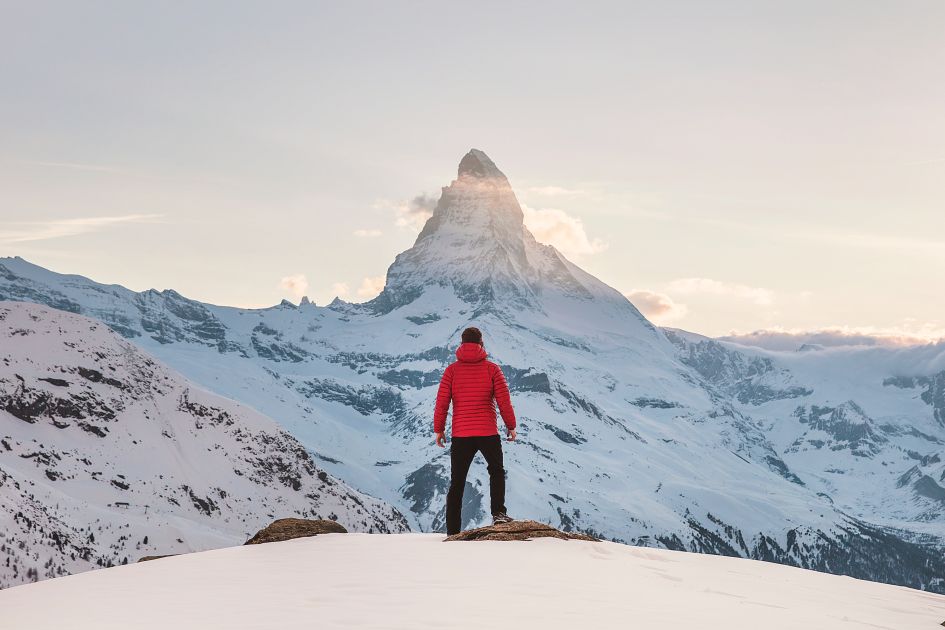
There is no easy solution for everybody. But hopefully this blog has given you some things to think about. Either changed your mindset in looking at how you tackle certain pistes, or what to do when you find the nerves starting to set in a bit. This blog won’t magically solve all your fears, you can only do that by getting out onto the slopes. Maybe the next time you’re out on the mountain however, you’ll head out there with more confidence and be skiing like a fearless champion in no time.
If you’re looking to get back out on the slopes again soon, ready to hit the pistes with confidence but are wondering where to go, why not send a message to one of our Ski Specialists at +44 1202 203650. Alternatively, send us an email and we can help send you off on your next luxury ski holiday.





